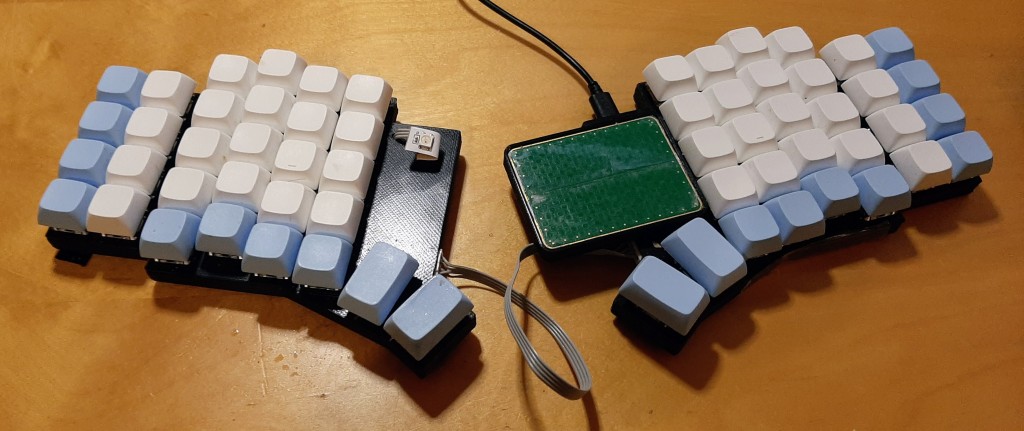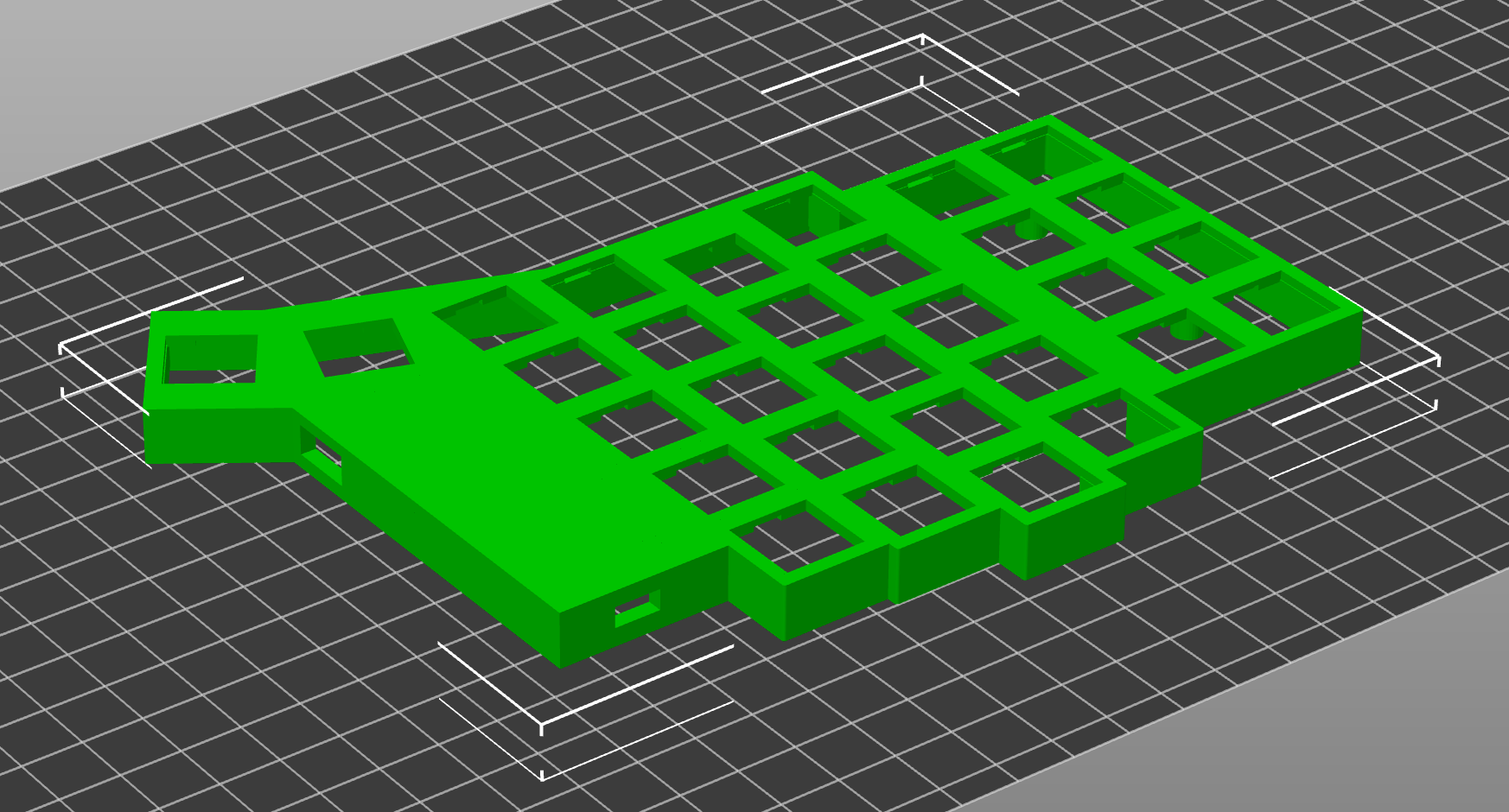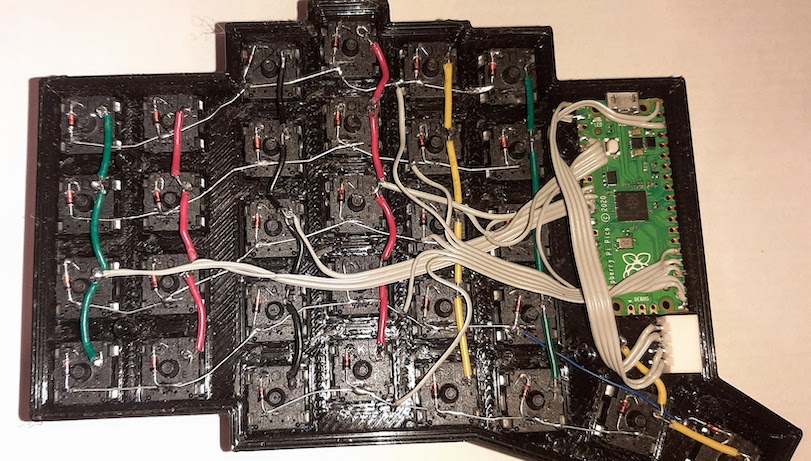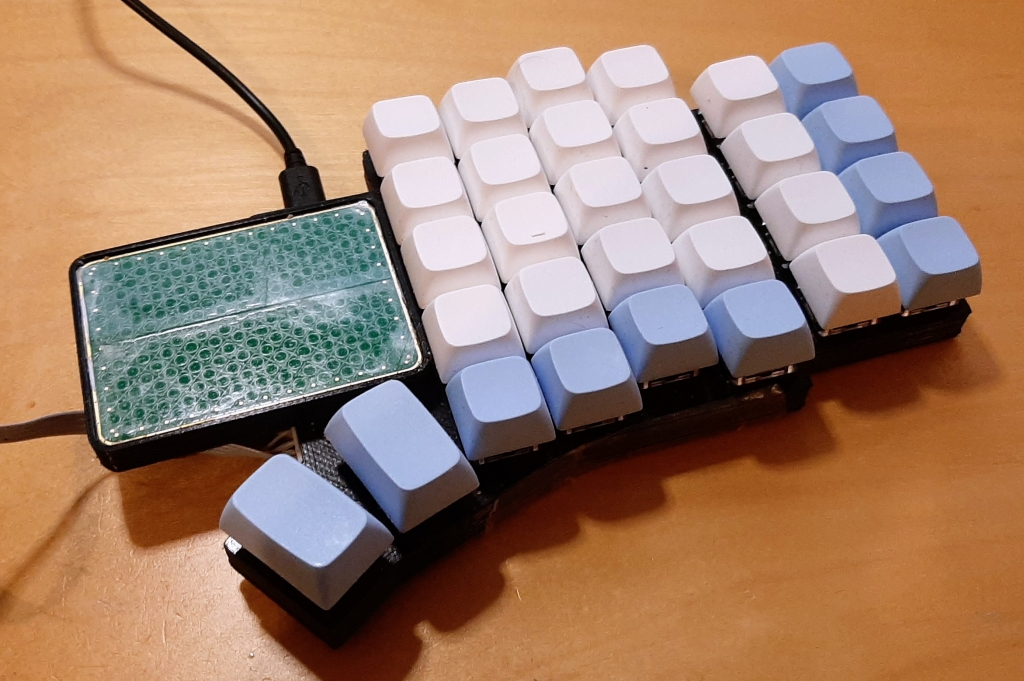An ergonomic, column staggered split keyboard with optional touchpad. Inspired by keyboards such as Lily58 and Sofle. Uses a 3D printed case, with handwired MX compatible switches and a Raspbery Pi Pico controller in each half. Designed using Ergogen.
Written in Rust, using Keyberon for matrix scanning, debouncing and USB HID support. Uses RTIC runtime and rp-pico for Raspberry Pi Pico support.
Each half runs the same firmware, with left / right being determined by GPIO 28 pull up/down (low = left, high = right). Either side can act as the primary (connected to host USB interface). Key events from the secondary half (not connected to USB) are sent to the primary over a serial link.
Firmware update is done on each half by resetting into bootloader mode and mounting the RP2 mass storage device and copying the firmware build onto it. To reset into bootloader mode, press the reset key combo (On layer 3, the outermost top key) five times.
The case is designed using Ergogen, version v3.1.2 - online at
https://ergogen.cache.works/ or local install (https://docs.ergogen.xyz/).
See case/Makefile for build commands. Generated SVG and STL
files for the case are included in case/svg and
case/stl. The left and right halves are identical and should be
mirrored when slicing for 3D printing.Gcode for an Ender 3 printer with 0.8mm
nozzle is included in case/gcode.
The keyboard matrix is handwired with RP PICO GPIOs 16-20 used for rows and GPIOs 2-8 for the columns. The thumb keys are both on the same column, with the outermost on row 3 and the innermost on row 4.
Communication between the halves is via a serial link using 4 pin JST-XH connectors. The cable has a cross-over for RX and TX, so each half has the same pin assingment:
- TX (from RP Pico pin 1)
- RX (from RP Pico pin 2)
- Vbus (from RP Pico pin 40)
- GND (from RP Pico pin 38)
An optional WS2812b LED can be added to indicate the current layer. This was added after the case was designed and printed, so a hole was drilled into the top for the wires to the LED.
An optional touchpad can be fitted to the case, using the TPS65-201A-S from Azoteq. This will appear as a USB HID mouse to the host computer.
The touchpad sits in a 3D printed holder and is wired to the RP Pico pins as:
- 14: RDY (GP10)
- 15: RST (GP11)
- 16: SDA (GP12)
- 17: SCL (GP13)
- 36: VDD (3.3V)
- 38: GND
It can be fitted to either side - the firmware will detect the presence of the touchpad - but must be on the same side as the USB connection to the host computer (the mouse reports are not sent over the serial link to the other half of the keyboard).
- 3D printed case top - left and right
- 3D printed case lid - left and right
- 60x MX style switches
- 60x 1N4148 diodes
- wire
- 60x keycaps
- 8x No2 gauge, 1/4" screws
- 2x Raspberry PI Pico
- 2x JST-XH 4 pin sockets
- 2x JST-XH 4 pin plugs
- 4 wire cable
- (Optional) 1x WS2812b compatible LED
- (Optional) TPS65-201A-S available from Digikey or Mouser



